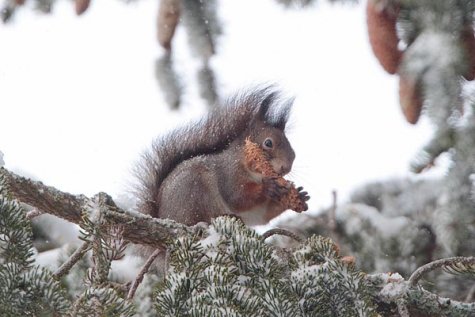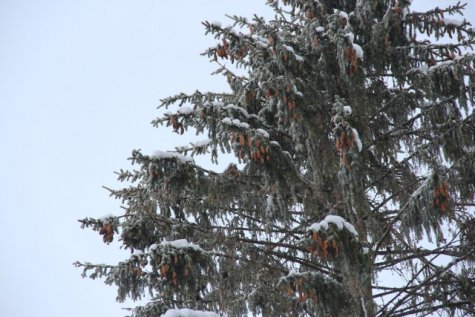Squirrels have spring dance
Photo: Arne Ader
Translation: Liis
Squirrel; red squirrel Harilik orav Sciurus vulgaris
In sunny weather the squirrel dance goes on. City people notice the likeable little creatures in parks, cemeteries and garden cities. The sunny side verges of spruce stands are rich in cones – thus we can meet the squirrels in hardwood, mixed and coniferous forests. This year they have no food worries, after six years there are plenty of spruce cones again, oaks were full of acorns in autumn, these the little creatures hid in the moss cover, a part of the ash seeds are still on the trees.
The food need of squirrels for a winter day is very small. Scientists have estimated it at only 40 grams on the basis of some data, and with unpleasant weather the squirrels will not get out of the nest. About the size of squirrels: the young of last autumn are already mature and independent, the trunk is around twenty centimetres, longer for older animals. The tail is a very important balancing organ, its length starts from about 15 centimetres for smaller animals but even older animals don’t have tails of much more than twenty centimetres (the tail fur hairs of course apparently add to the length).
But during the heat period, as now, the food requirement increases to the double. One female is escorted by a couple, sometimes even several, males who are trying to catch the attention of the beauty in her winter fur. Quarrels between the male animals are common, sometimes quite vocal.
The pregnancy of the female is 35 to 38 days, during this time the female builds a new birthing nest. The squirrels have many nests for spending the night that they change quite often when fleas start to be bothersome; the squirrel mother does not want to feed the fleas with her three to four newly-born young.
In such a „food store" tree the squirrel builds a new nest
Photographed by Silvi Tanning, Lääne - Virumaa










